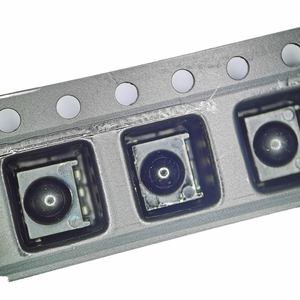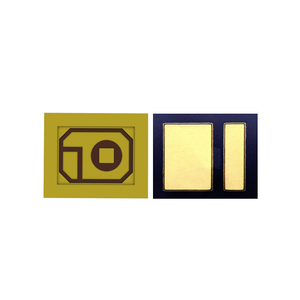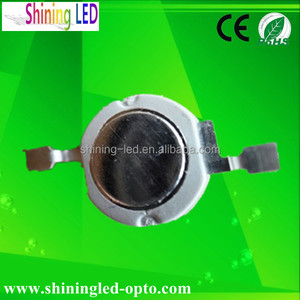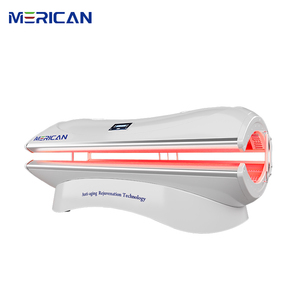(735 products available)






















































































































































































Light source 850nm refers to a light that is emitted at a wavelength of 850 nanometers. This wavelength is in the near-infrared (NIR) spectrum. Normally, this light is not visible to the human eye but can be sensed as heat. It has various applications in different industries. For instance, it is commonly used in surveillance, photography, and fiber optic communications. Based on the application, there are different types of light sources for 850nm. They include;
LEDs
LEDs are semiconductor devices that emit light when an electric current passes through. The LED light source at 850nm is popular due to its low power consumption, long lifespan, and fast switching capabilities. They are commonly used in applications such as night vision, security cameras, and infrared communication. LEDs have a broader, relatively lower intensity spectrum compared to lasers.
Laser Diodes
Laser diodes are similar to LEDs but emit light through a process of stimulated emission. The light source 850nm lasers produce a high-intensity, coherent beam of light that can be focused over long distances. They are applied in fiber optic communication, barcode readers, and optical disc drives. Also, they have a narrow, high-intensity spectrum and are more suitable for applications requiring long-range IR illumination.
Incandescent Bulbs
These are traditional bulbs that produce light by heating a tungsten filament until it glows. Incandescent bulbs can be modified with filters to emit 850nm light. However, they are less efficient and have a shorter lifespan than LEDs and laser diodes. They emit a broad spectrum of light, but most of the energy is concentrated at wavelengths outside the near-infrared range.
Halogen Bulbs
These are a type of incandescent bulb filled with halogen gas. Halogen bulbs can also be designed to emit light at 850nm. While they are slightly more efficient than standard incandescent bulbs and have a longer lifespan, they are still less efficient than LED or laser diode sources. They produce a bright, white light with a good amount of near-infrared energy.
High-Intensity Discharge Lamps
These are metal halide or high-pressure sodium lamps. They are not specifically designed as light sources for 850nm. However, some applications may use HID lamps with filter modifications to achieve an 850nm output. Overall, they are less common for such specific applications. Generally, they offer high luminous intensity and are more commonly used in applications requiring bright, efficient lighting.
Here are some key features and functions of a light source 850nm:
Near-infrared Light:
An light source 850nm is considered NIR light. NIR light is used in different industries, like agriculture, medicine, and surveillance. It is less visible to the human eye but can be detected by special cameras and sensors.
Penetration:
850nm light can penetrate human tissue up to 2 inches. It reaches the skin, muscles, and fat layers. This makes it useful for medical imaging and treatments. NIR light is also used to promote blood circulation and reduce inflammation.
Imaging and Sensing:
An light source 850nm is widely used in imaging applications. For example, it is used in optical sensors and night vision devices. It creates images in low-light conditions. This helps to detect and monitor objects in darkness.
Illumination:
Some cameras and sensors use an 850nm light source for illumination. This allows them to capture clear images in the dark. The illumination is less visible to humans but provides sufficient light for imaging.
Low Power Density:
The 850nm light source has a low power density. This means it emits a small amount of energy. As a result, it is considered safer for human exposure than other wavelengths. It is commonly used in medical and therapeutic applications.
Versatility:
An 850nm light source is very versatile. It is used in a wide variety of applications. For example, it is used in biomedical research, data transmission, and environmental monitoring. It has different uses across different industries.
Fiber Optic Communication:
The 850nm light source is also used for fiber optic communications. It helps to transmit data over long distances through optical fibers. This allows for fast and efficient data transfer in telecommunication networks.
There are several applications of 850nm light source, including:
Security and Surveillance
850nm LED produces a dim red glow that is less visible to the naked eye. This makes it possible to monitor activities in total darkness without alerting potential intruders. Cameras capture detailed images in low-light conditions. This enhances threat detection and monitoring in perimeters, dark streets and other vulnerable areas.
Astronomy
850nm LEDs are used in telescopes and other astronomical instruments. The light source has minimal interference with night vision. This allows for observation of celestial bodies without light pollution. The technology also enhances the visibility of faint stars and galaxies. This is because the 850nm light waves have less atmospheric scattering.
Biomedical Research
Researchers use 850nm LEDs in various biomedical applications. This includes studying tissue samples and analyzing cellular structures. The light source has a minimal impact on biological samples. This allows for accurate imaging and analysis. Additionally, 850nm light waves penetrate biological tissues. This enables non-invasive imaging techniques such as near-infrared spectroscopy and optical coherence tomography.
Plant Growth
Plants use light for photosynthesis. Growers use light source 850nm to supplement natural sunlight in greenhouses. The 850nm wavelength promotes healthy plant growth. This includes the development of fruits, vegetables and flowering. Additionally, NIR light accelerates the germination of seeds. This leads to higher crop yields and improved food security.
Therapeutic Uses
Healthcare professionals use 850nm light therapy for various treatments. This includes muscle relaxation, improved circulation and reduced inflammation. The light waves interact with skin and underlying tissues. This leads to the production of ATP. As a result, it enhances cellular repair and promotes wound healing.
When choosing a 850 nm light source, several factors must be considered to ensure the selected source meets the intended application requirements. Here are some key factors to consider:
Output Power
The output power is the light energy transmitted by the source. In some applications, suchly as spectroscopy, a higher output power can be beneficial. However, a higher output power can cause saturation or damage to the sensors in other uses. Therefore, it is important to consider the requirements to ensure the proper light source is selected.
Beam profile
The beam profile refers to the spatial distribution of light intensity. A more uniform beam profile is suitable for imaging applications. At the same time, collimated beam optics is ideal for applications that require minimal divergence.
Modulation capabilities
Many light sources can be modulated by varying the intensity of light pulses. When choosing a light source, it is important to consider the modulation frequency and depth.
Cooling system
Cooling systems are vital in maintaining the stability and performance of the optical sensor. The system can be passive or active. Active cooling is necessary for high power densities. At the same time, a well-designed passive cooling system can be sufficient for lower power applications.
Power supply
A power supply is needed to operate the light source. When evaluating the light source, it is important to look at the specifications of the power supply. This includes its stability, reliability and suitability to the intended application.
Durability
The durability of the light source should be considered, especially for applications in extreme environmental conditions. A good light source should be able to withstand harsh environments without compromising its performance.
Ease of integration
When selecting a light source, it is important to evaluate its compatibility with other systems and components. This includes; optics, detectors and imaging systems. An ideal light source should be easily integrated into the existing setup.
Q1: Is it safe to use an 850nm light source?
A1: An 850nm light source is generally safe. However, it is important to use it properly. The light source is commonly used in various applications. These include photography, surveillance and plant growth.
Q2: What are the benefits of an 850nm light source?
A2: Benefits of an 850nm light source include enhanced visibility in dark environments. It also supports plant growth and is used in medical therapies and treatments.
Q3: What does an 850nm light source look like?
A3: An 850nm light source appears as near infrared. It is not visible to the human eye. However, it can be detected using specialized equipment.
Q4: What materials can be used to filter or block an 850nm light source?
A4: Materials that can block or filter an 850nm light source include glass, plastic, and infrared filters. These materials provide varying degrees of attenuation or transmission at 850nm.
Q5: How does the intensity of an 850nm light source affect its applications?
A5: Higher intensity 850nm light sources provide better illumination and contrast in imaging and surveillance. Lower intensity sources are beneficial for sensitive plant growth and medical treatments.